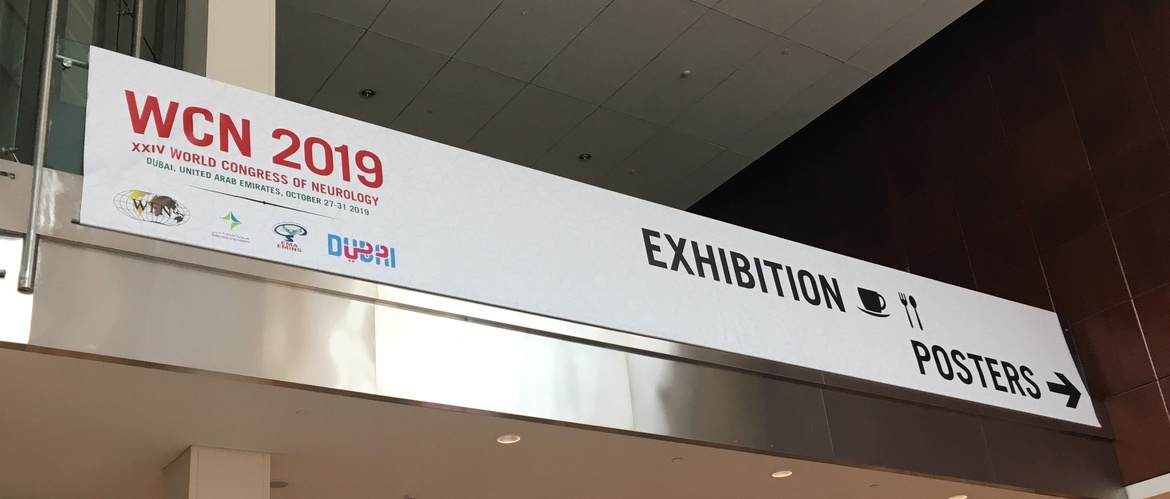
Choose a channel
Check out the different Progress in Mind content channels.

Progress in Mind

Cluster headache and other trigeminal autonomic cephalalgias are distinct from migraine and require a different clinical approach. Differences are seen in attack location, frequency and duration, and the level of autonomic involvement. At the World Congress of Neurology 2019, Professor Shuu-Jiun Wang of National Yang-Ming University, Taipei, Taiwan, outlined possible causes, distinguishing features and treatment options.
Cluster headache affects about 0.1% of the global population and has some characteristics which are markedly different from migraine. Notably, it tends to occur more in men than in women, and has a shorter attack duration and higher frequency.1,2
It involves severe pain on one side of the head. Attacks are short – lasting 15 minutes to 3 hours – and can occur up to 8 times per day and can last for weeks or months.
Different symptoms
In the ICHD-3 criteria, cluster headache is classified among the trigeminal autonomic cephalalgias (TACs), which is a category of primary headache disorders. [link to PiM article “ICHD-3: What’s changed?”] The TACs are characterized by unilateral headaches with prominent cranial parasympathetic autonomic features on the same side as the headache.
Unlike migraine, cluster headache occurs more in men than in women
The autonomic features can include conjunctival injection, crying, eyelid edema, eyelid drooping, excessive constriction of the pupil, nasal congestion or excess fluid, and facial sweating. If there is not at least one of these symptoms, a sense of restlessness or agitation is also enough for diagnosis.
Different frequency
For a diagnosis of cluster headache, the patient should have had at least five attacks with severe unilateral pain lasting between 15 and 180 minutes. The attack frequency must be between every other day and eight times per day. This contrasts with migraine, which has a longer attack duration and lower frequency.
The main difference between the TACs is attack duration
The period when cluster headaches are occurring is referred to as “in-bout”, and periods of remission are “out-bout”. The relationship between the in-bout and out-bout periods is critical for differentiating episodic and chronic cluster headache.
Episodic cluster headache has at least two in-bout periods of between 7 days and 1 year when untreated, separated by out-bout periods of at least 3 months. Chronic cluster headache, on the other hand, has at least 1 year of out-bout periods lasting less than 3 months each.
Risk of depression
Patients with cluster headache have a similar incidence of depression to migraine patients. In one study, about 3.6% of cluster headache patients developed depression – around five times higher than controls – with a median latency of 2.5 years. The main risk factors for depression were the number of cluster periods per year, and being female.3
Other TACs
There are a number of other TACs, and the principal difference between them is the duration of attacks when untreated:1
Professor Wang recommended that all patients with suspected TACs have imaging studies, as TACs can be secondary to anatomical lesions. These could be neurovascular or structural lesions, and are most commonly in the pituitary, carotid or cavernous sinus regions.4
What causes TACs?
Three brain regions are particularly important in TACs: the hypothalamus, the trigeminocervical complex, and the superior salivatory nucleus (SSN). The SSN co-ordinates the trigeminal-autonomic reflex, which is responsible for many of the autonomic symptoms of cluster headache.1 There are even dynamic structural5,6 and functional7,8 changes between in- and out-bout periods.
This results in a complex system involving many neuropeptides.9 One of the most important biomarkers for cluster headache is calcitonin gene-related peptide (CGRP).
CGRP infusions provoked cluster headache attacks in patients
A study of cluster headache patients found that infusions of CGRP provoked cluster headache attacks, particularly in chronic cluster headache or during the active period of episodic cluster headache.10 However, it should be noted that CGRP is not a specific marker of cluster headache and is also implicated in migraine.
Cluster headache is also known to have a genetic component from studies of monozygotic twins and first-degree relatives of patients.11,12 However, there have not been any large scale genome-wide association studies.
Treatment options
The main acute treatment options for cluster headache are triptans and 100% oxygen at a high flow rate.13,14,15 As an alternative to medications, there are also some neuromodulation strategies.1 Professor Wang suggested that preventative therapy should be considered from the first day the patient is seen.
Our correspondent’s highlights from the symposium are meant as a fair representation of the scientific content presented. The views and opinions expressed on this page do not necessarily reflect those of Lundbeck.
1. May A, et al. Nat Rev Dis Primers 2018;4:18006.
2. Yang F-C, et al. in Cluster Headache and other Trigeminal Autonomic Cephalalgias 2020;Chapter 17.
3. Liang J-F, et al. Cephalalgia 2013;33(3):182-9.
4. Francis M. J Headache Pain Manag 2017;2(1):1-9.
5. Yang F-C, et al. Pain 2013;154(6),801-7.
6. Chou K-H, et al. Cephalalgia 2014;34(13):1040-52.
7. Yang F-C, et al. J Neurol Neurosurg Psychiatry 2015;86(4):437-45.
8. Chou K-H, et al. Cephalalgia 2017;37(12):1152-63.
9. Riesco N, et al. Curr Pain Headache Rep 2017;21(4):18.
10. Vollesen A, et al. JAMA Neurol 2018;75(10):1187-97.
11. Taga A, et al. Neurol Sci 2015;36(Suppl 1):141-3.
12. Cruz S, et al. Arq Neuropsiquiatr 2013;71(11):866-70.
13. Wei D, et al. Pract Neurol 2019;19(6):521-8.
14. Ramusino M, et al. J Oral Facial Pain Headache 2019;33(1):89-104.
15. Petersen A, et al. Cephalalgia 2014;34(13):1079-87.